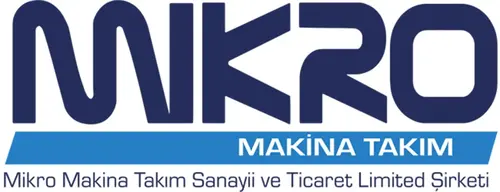Ultrasonic welding is a solid-state joining process in which high-frequency (>20 kHz) mechanical vibrations are transmitted to the contact surface of two materials being joined. This method is especially preferred for thermoplastics and certain metal combinations, offering short cycle times and repeatable quality in automated production environments.
How Does an Ultrasonic Welding System Work?
Ultrasonic welding operates on the principle of converting electrical energy into mechanical vibration and then into thermal energy. This energy transformation is achieved through the following components:
Key Components of the System
Generator (Power Supply): Converts AC current into an alternating signal (20–40 kHz) suitable for the system’s operating frequency.
Transducer (Converter): Uses piezoelectric crystals to convert the electrical signal into linear mechanical vibrations.
Booster: Adjusts the mechanical amplitude (either increasing or decreasing) and directs the vibration.
Horn (Sonotrode): The final element that transmits vibration to the weld zone. It is typically designed as a half-wavelength (λ/2) resonator to match the system frequency.
Z-Axis Press Mechanism: Applies appropriate clamping pressure (usually between 1–5 bar), directly affecting weld quality.
Welding Mechanism – Technical Overview
During ultrasonic welding, vibration energy generates localized heat at the interface. This heat raises the material above its glass transition temperature (Tg) or melting point (Tm), allowing molecular bonding between the surfaces.
The Process Consists of Three Main Phases:
Energy Application: Vibrations start; frictional heat is generated at the interface.
Fusion: The material softens locally and surface structures break down.
Cooling & Solidification: Vibration stops, clamping continues, and solid weld is formed.
Technical Advantages of Ultrasonic Welding
| Feature | Description |
|---|---|
| Short Cycle Time | Suitable for mass production with weld times between 0.1 – 1.0 seconds. |
| Contactless Energy Transfer | Heat is generated only at the joint surface, minimizing peripheral damage. |
| High Repeatability | With optimized parameters, ±0.05 mm accuracy can be achieved. |
| No Chemicals Needed | No glue, solvents, or fasteners required. |
| Low Energy Consumption | Energy is applied only at the welding point. |
Ultrasonic Welding Applications
Industries & Use Cases:
Automotive
ABS and PP air ducts
Sensor housings
Filter casings
Medical
Nonwoven mask and gown sealing
Luer connector welding
Filtration components
Electronics
Battery modules
PCB enclosures
Wire harness assemblies
Packaging & Food
Ultrasonic bag sealing
Leak-proof sterile packaging
Textile
Heat-free stitching
Ultrasonic edge sealing
The Importance of Horn (Sonotrode) Design
The horn (sonotrode) is a critical component that directly affects welding efficiency. Depending on the application, it must be optimized for the following parameters:
| Parameter | Technical Detail |
|---|---|
| Material | Titanium (Ti6Al4V), Aluminum 7075, Stainless Steel |
| Operating Frequency | 20, 30, 35, 40 kHz (must match the system’s resonance frequency) |
| Amplitude | 10–50 μm range; should be adjusted based on the weld material |
| Geometry | Flat, slotted, notched, or custom forms – optimized using FEM analysis |
| Surface Treatment | Micro-texturing (Rz 3–5 μm) to increase frictional grip |
At Mikro Makina, we manufacture application-specific, resonance-tested, and dynamically balanced ultrasonic horns using our advanced 5-axis CNC infrastructure. All horns are designed using FEM (Finite Element Method) simulations to minimize vibration losses.
Process Control & Quality Assurance
For a stable ultrasonic welding process, the following control modes must be properly configured:
Time-based welding
Energy-based welding
Collapse distance-based welding
The ideal mode should be selected based on product geometry and material properties.
Conclusion: A New Standard in Industrial Welding
Compared to conventional methods, ultrasonic welding is faster, cleaner, and more reliable. Process stability is achieved through precise frequency tuning, optimized horn design, and controlled clamping pressure.
At Mikro Makina, we offer not only high-quality ultrasonic horns, but also the engineering know-how and manufacturing capability to support your entire ultrasonic welding process.
Looking for Custom Solutions?
Contact us for tailor-made ultrasonic horn design and production for your specific application.
📧 info@mikrotakim.com
📞 +90 (212) 876 90 15
🌐 mikrotakim.com
#UltrasonicWelding #IndustrialJoining #ManufacturingTechnology #MikroMakina #WeldingInnovation #PlasticWelding #MetalBonding #AutomotiveIndustry #MedicalDevices #AdvancedManufacturing #HighFrequencyWelding #Industry40 #EnergyEfficiency #PrecisionEngineering
